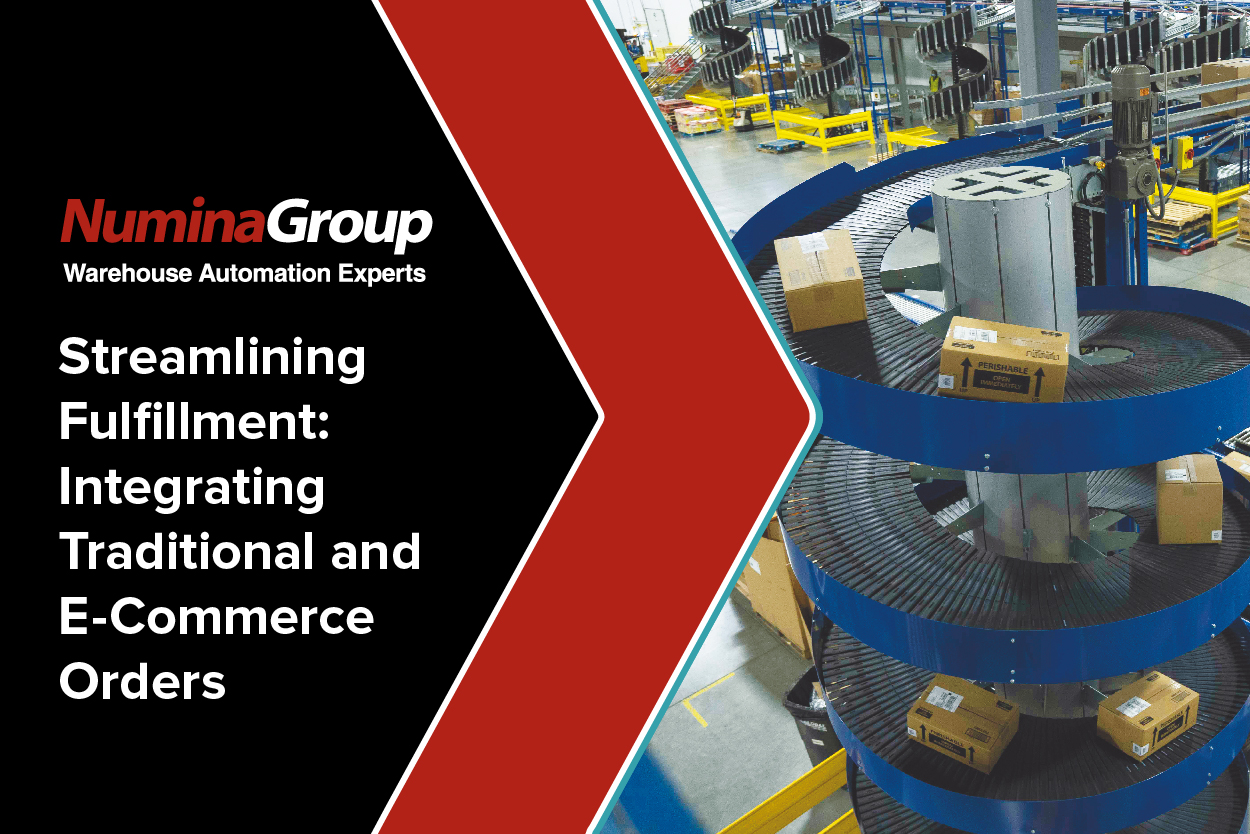The convenience of e-commerce or online shopping is firmly entrenched in consumer shopping habits and continues to take up a growing proportion of total retail sales.
As noted by Shopify, from 2021 to 2027, annual global e-commerce sales are projected to increase by $3 billion, marking an overall increase of 61.1% and an average annual growth rate of 8.3%.[i]
As a result, virtually all retailers and retail suppliers are adapting their operations to manage e-commerce order fulfillment. Many are grappling with the pivotal question of cost-effectively handling online orders’ exponential growth, adapting their existing facilities, and/or designing new operations to manage omnichannel fulfillment efficiently.
The goal should be to use existing distribution center facilities to integrate the e-commerce sales channel efficiently and profitably into the company’s overall order fulfillment operation.
Blog: Automate an Existing DC or Open a New Satellite Warehouse?
Yet, adding e-commerce order fulfillment to an existing DC operation can be complex to manage, mainly because e-commerce orders have a markedly different order profile than orders shipped to retailers and B2B operations.
E-commerce orders typically contain a single or a few individual items. For example, an e-commerce order may include garments of multiple sizes, with the buyer aiming to keep some items and return others. Today, e-commerce order SKU counts are trending lower, with 60% of e-commerce orders consisting of 1 – 3 line items and 15%+ consisting of 1 SKU, a trend that shows no signs of slowing down.
E-commerce orders are generally small package-sized shipments delivered via parcel carriers such as UPS, FedEx, or the USPS to a consumer at a residential address rather than being shipped to a store or distribution center. These orders are vastly different from less-than-truckload (LTL) mixed-case pallet shipments or full trailers delivered to a distribution center via freight carriers.
As a result, many operations struggle to blend split-case, low-SKU count orders into operations set up to fulfill predominately full-case, full-pallet LTL orders.
Without the right processes and technology, managers will be forced to adapt with costly and time-consuming manual workaround processes. The DC operation will struggle to efficiently pick, pack, and ship e-commerce orders alongside the operation’s larger shipments.
Speed and accuracy are critical components of profitable order fulfillment operations. To integrate e-commerce order fulfillment into your existing operations, you will need to devise an efficient, low-touch process that contains costs, ensures accuracy, and meets customer delivery expectations.
From the moment orders are received to when they are picked, packed, and shipped, the processes must be lean, accurate, result in a low cost per order, and be scalable and adaptable to change. These criteria are particularly true for e-commerce orders with order fill windows measured in a few hours to satisfy customer service expectations that build loyalty.
Increasingly, wholesalers and other suppliers to retailers must add in-house e-commerce order fulfillment capabilities to their operations to satisfy multiple sets of shipping requirements for numerous channels, including direct-to-consumer, retail clients, Amazon direct-to-customer shipments, and other online marketplaces.
Fulfilling these orders requires additional pick, pack, and ship rules and processes, as well as the ability for distributors to provide retailer-specific compliance labels, packing documentation, and return labels to each shipment.
Blog: Key Automation For Omnichannel E-commerce Order Fulfillment Solutions
One example of this is the fulfillment of orders that appear to the end customer as if the shipment originated directly from Amazon or another specific retailer when, in reality, it is fulfilled by another distribution operation.
Essentially, the distribution center acts as a 3rd party logistics provider (3PL) that fulfills e-commerce orders for Amazon and its retail customers. The order picking, packing, documentation, and labeling must match each retailer’s specifications to avoid compliance fines that are assessed if the order is shipped with the wrong labels, is missing labels, or has missed delivery windows.
By its very nature, e-commerce is a problematic distribution channel to manage. It is not well suited to manual paper-based or RF-managed pick-and-pack processes that rely on human decisions to enforce shipment rules. A highly efficient pick, pack, and ship process design directed with the right technology can ensure lower labor costs and higher accuracy in order fulfillment.
Blog: The True Cost of Not Automating Your Warehouse
The optimal solution to address these complexities is implementing an end-to-end warehouse execution (WES) platform that integrates and automates e-commerce and traditional fulfillment processes. Tier I WES solutions, such as Numina Group’s RDS™ WES solution, offer the flexibility and configurability needed to accommodate specific fulfillment needs.
RDS includes sophisticated order release planning software and voice-picking technology to optimize, automate, and direct pick and pack rules, ensure order accuracy, track order details, and increase worker productivity.
Learn More About the RDS WES-WCS Platform
Numerous other technologies can be integrated to eliminate manual processes, such as automated conveyors, batch-picking modules with AMRs, document print-fold-insertion systems, scan-weigh-dim systems, print-and-apply labeling, and manifesting systems.
You will achieve the highest performance improvements and ROI by conducting a warehouse engineering and automation design study to determine the right technologies for your operations, ideally deployed with an end-to-end warehouse execution system (WES) such as Numina’s RDS™ platform.
The best way to ensure that you’ll achieve the desired ROI on your warehouse automation project is to work with an independent systems integrator who is vendor-neutral and has in-depth experience working with all the leading material handling providers. This will ensure that your solution will be based on the best technology that suits your specific operations.
You will also achieve the best results by selecting a systems integrator such as the Numina Group, which specializes in warehouse automation and optimization solutions. The Numina Group has over 40 years of experience helping companies optimize warehouse processes to gain space efficiency and reduce labor costs across order fulfillment operations.


The Numina Group
10331 Werch Drive
Woodridge, IL 60517
630-343-2600
How the Right Warehouse Automation Decisions Can Solve Your Labor Woes As the economy roars